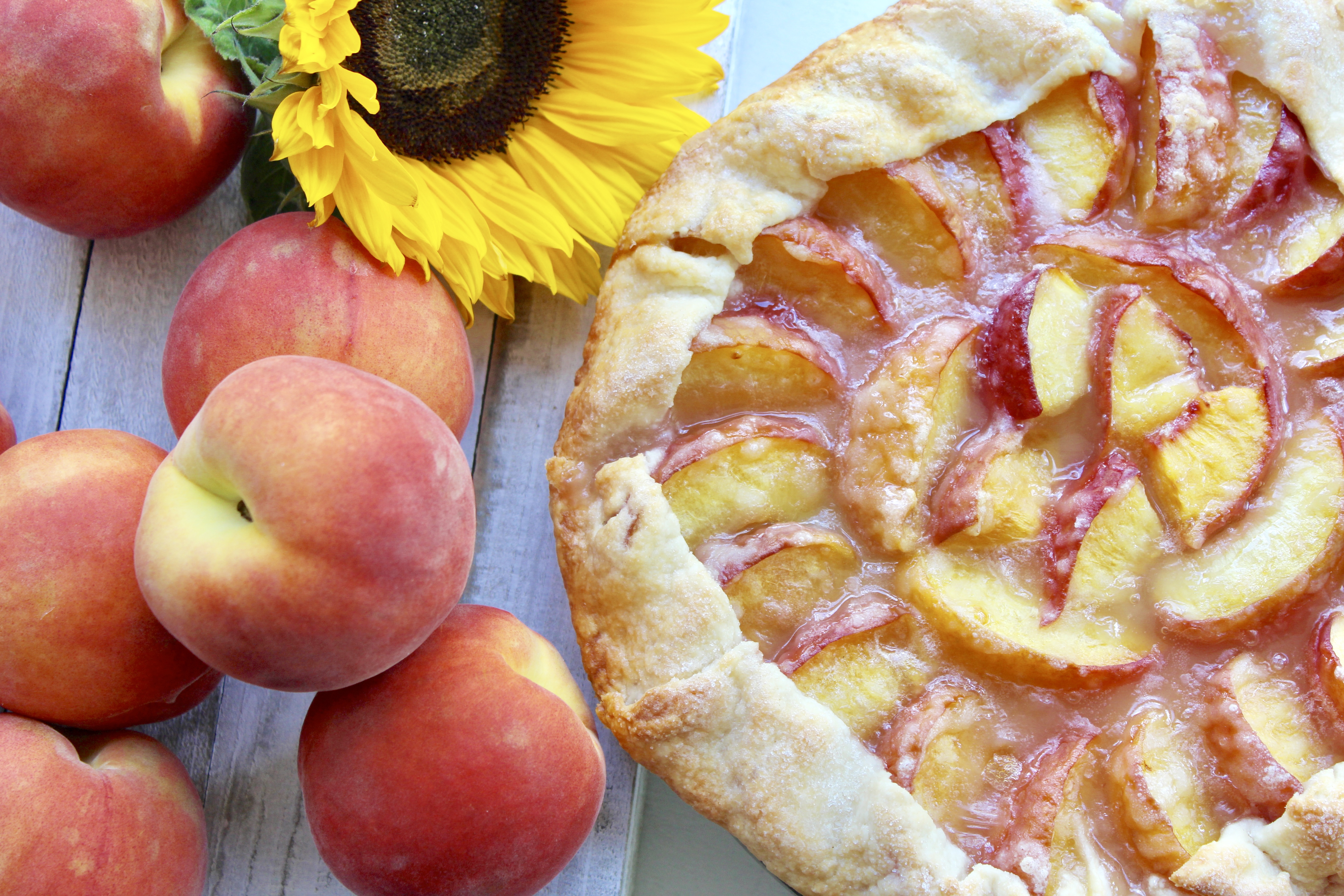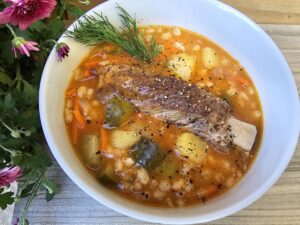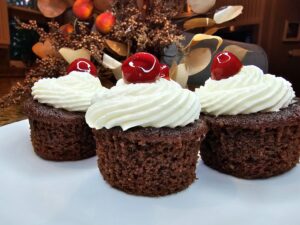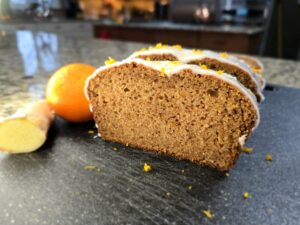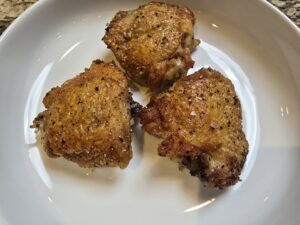When it comes to choosing between a crostata and a regular pie, I’m always team crostata! It’s quicker to make, takes less time to cool, and doesn’t leave me with a giant pie that I’m tempted to snack on all week long. This humble peach crostata serves 4-6, making it the perfect no-fuss dessert that disappears before you know it—no leftovers, no extra calories!
One thing to keep in mind when making this crostata: it’s important to roll it out a bit larger than you would for other crostatas (like my apple version, which is smaller in diameter). A larger crostata allows all those delicious peach juices to evaporate during baking, preventing any sogginess and keeping the crust crisp and flaky.
There’s something magical about summertime desserts made with seasonal fruit, and this peach crostata is no exception. Juicy, sweet peaches wrapped in a rustic, golden-brown crust—what’s not to love? 🍑✨
Ready to get baking? Let’s make the most of those fresh summer peaches! 🧡
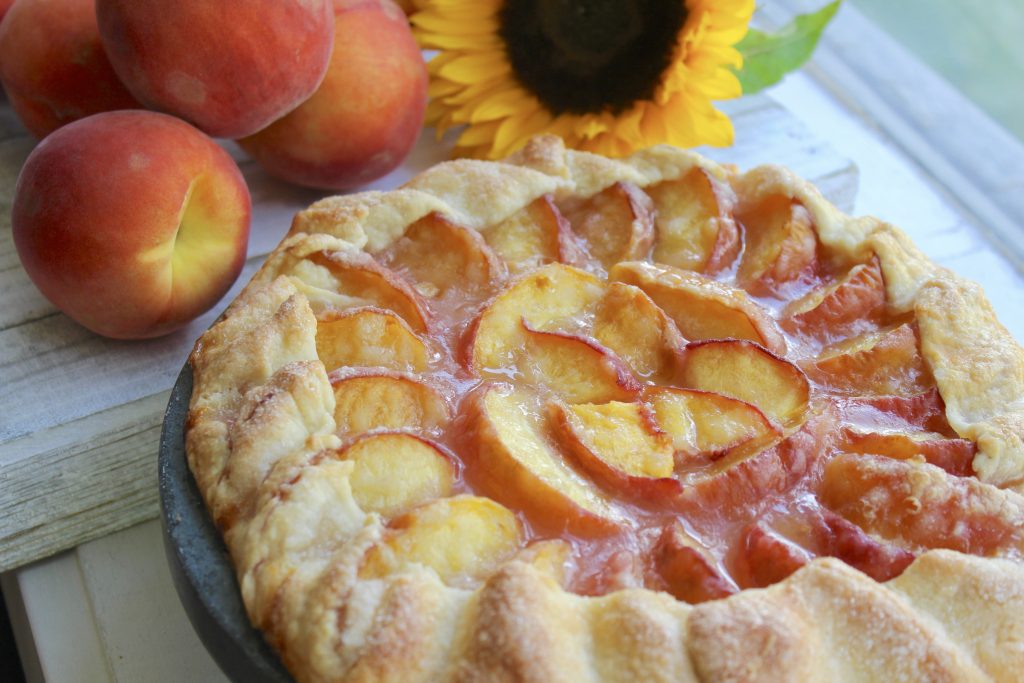
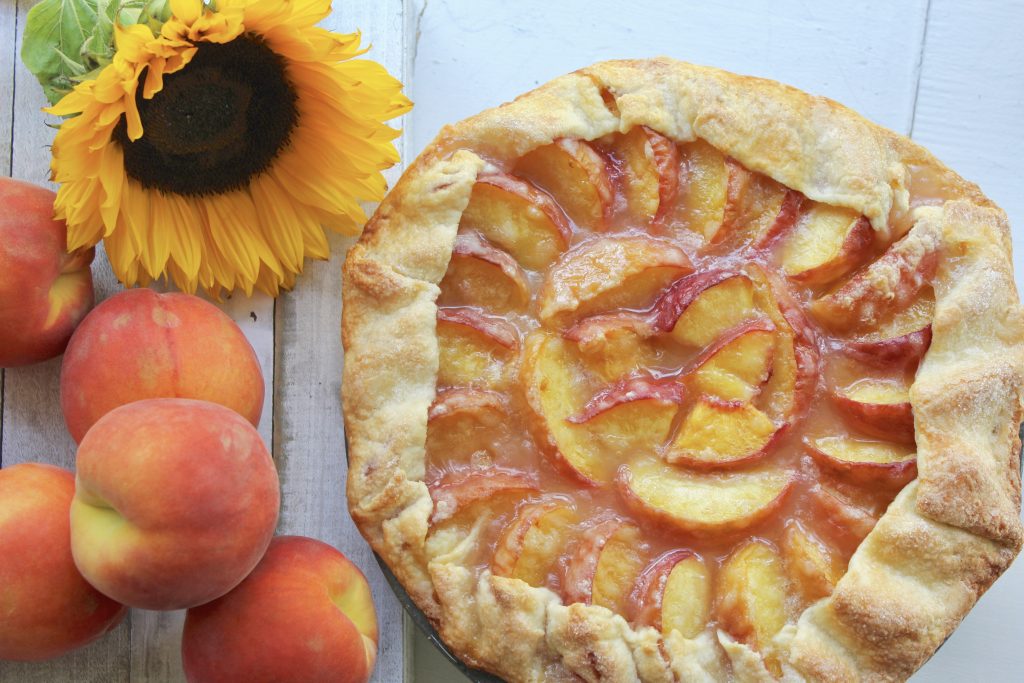
Roll your pie crust to about 13" circle in diameter. Place it on an inverted baking sheet lined with parchment paper, cover with plastic wrap and refrigerate for at least an hour.
When ready to bake, preheat the oven to 400° and set the racks to the lower third of the oven.
In the meantime wash the peaches, halve them, remove the pit and slice each half into 4 pieces or so (around 8 wedges per peach.) You do not want to make the slices too thin.
Arrange these pieces in a circle that's just under 10" in diameter in a single layer on a piece of parchment paper- you are doing this to ensure you have just the right amount of peaches. I find that I usually need 3.5 large peaches. Snack on the leftover pieces.
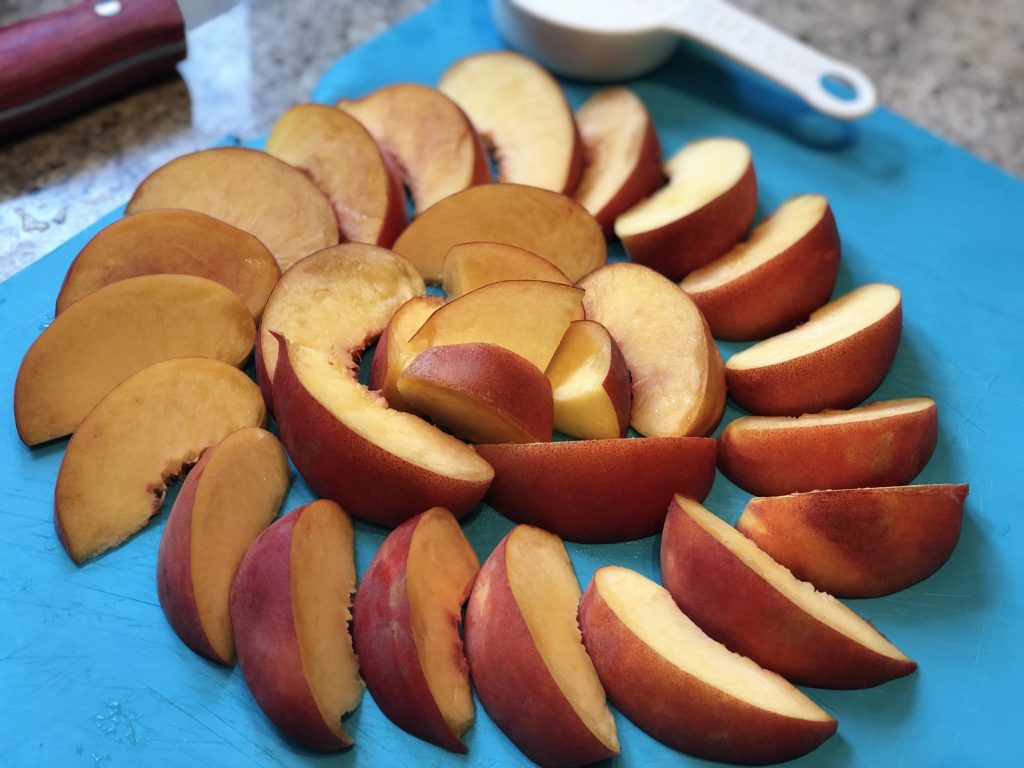
Toss your peaches pieces with sugar and a pinch of salt, gently rubbing them with your hands to coat well but not to break the pieces. Sprinkle with flour and ensure it's distributed evenly. Arrange these pieces on top of rolled out dough, leaving the outer 1.5-2" uncovered.
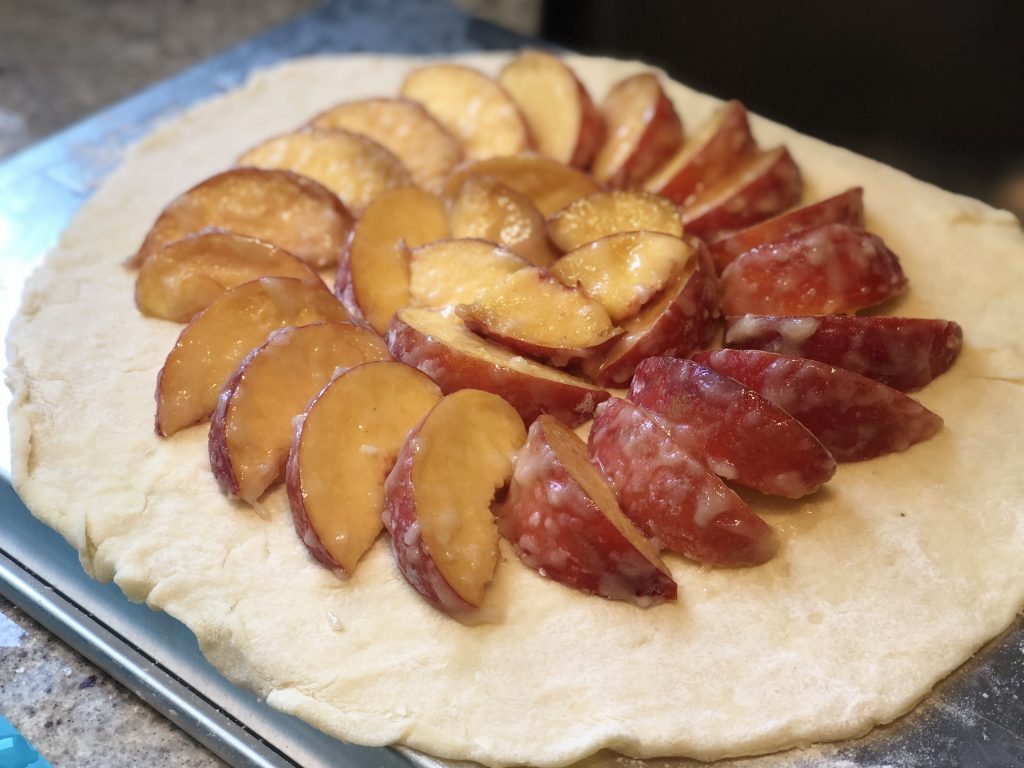
Gently fold the edges of the pie crust over the peach circle forming a rustic crostata. Place this into the fridge for 15 minutes, but not much longer.
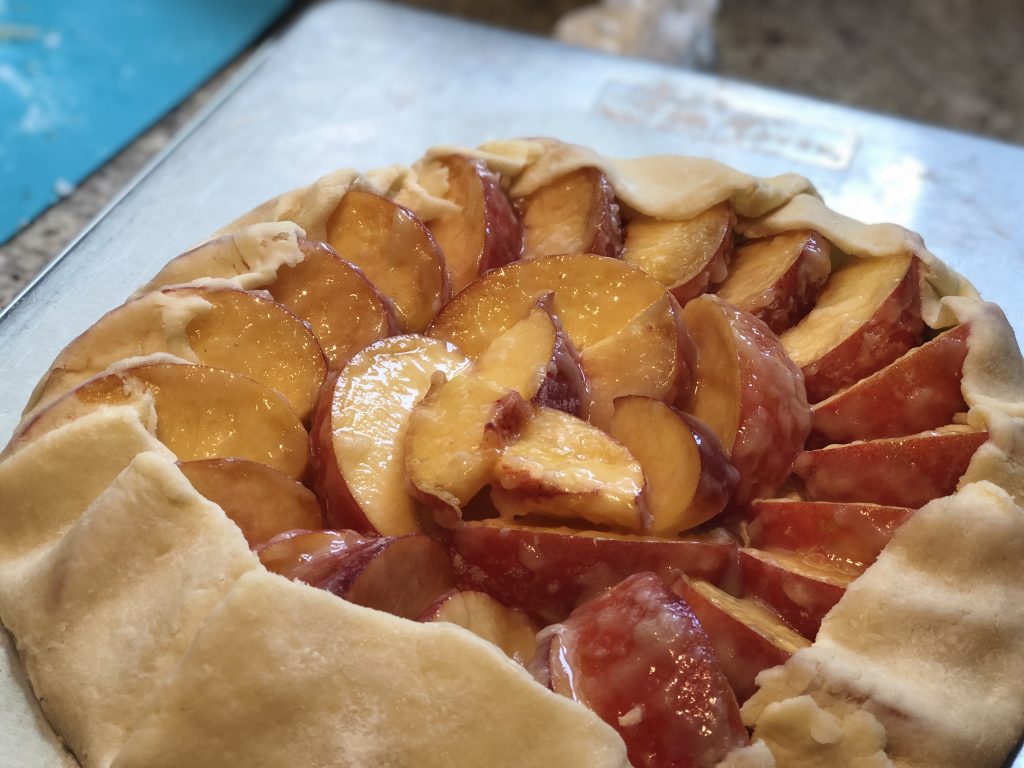
Remove the crostata from the fridge, brush the edges with the egg wash and sprinkle them with 1.5 tsp sugar. Bake in preheated oven for 40-45 minutes until the crust is golden and the filling is bubbling.
You can serve this warm (let it cool slightly first) or at room temperature. Enjoy!
Ingredients
Directions
Roll your pie crust to about 13" circle in diameter. Place it on an inverted baking sheet lined with parchment paper, cover with plastic wrap and refrigerate for at least an hour.
When ready to bake, preheat the oven to 400° and set the racks to the lower third of the oven.
In the meantime wash the peaches, halve them, remove the pit and slice each half into 4 pieces or so (around 8 wedges per peach.) You do not want to make the slices too thin.
Arrange these pieces in a circle that's just under 10" in diameter in a single layer on a piece of parchment paper- you are doing this to ensure you have just the right amount of peaches. I find that I usually need 3.5 large peaches. Snack on the leftover pieces.

Toss your peaches pieces with sugar and a pinch of salt, gently rubbing them with your hands to coat well but not to break the pieces. Sprinkle with flour and ensure it's distributed evenly. Arrange these pieces on top of rolled out dough, leaving the outer 1.5-2" uncovered.

Gently fold the edges of the pie crust over the peach circle forming a rustic crostata. Place this into the fridge for 15 minutes, but not much longer.

Remove the crostata from the fridge, brush the edges with the egg wash and sprinkle them with 1.5 tsp sugar. Bake in preheated oven for 40-45 minutes until the crust is golden and the filling is bubbling.
You can serve this warm (let it cool slightly first) or at room temperature. Enjoy!
Notes
And here’s the recipe for pie crust:
This recipe makes 1 pie crust. Feel free to double it if making 2 pies or one double-crusted pie.
Add the flour, salt, sugar and butter to the bowl of your stand mixer. Place the paddle attachment into the bowl and place everything into the fridge to chill. Every ingredient as well as everything that touches the dough should be very cold. Chill for at least half an hour.
When chilled, set up the paddle attachment and mix on low until the flour resembles coarse crumbs. You are not looking for small pea sized crumbs - you are looking for large fluffy crumbs. Basically all of those 1/2" cubes should be gently smashed by the mixer without turning into a mealy powder.
With the mixer running on low, add water in a steady stream. Mix until just comes together. Transfer onto a work surface, flatten the dough, fold it over itself a couple of times (that creates those delicious layers without the risk of overmixing.) Fold it like you would a letter, flatten it, then fold again..
Roll out your dough to the required shape on a well floured surface. Don't be afraid of flour and use it liberally, simply brush it off after you are done rolling.
The important thing is to roll the dough to 3-4mm. It's 1/8 of an inch or just under to about 14 inches in diameter. Use this pie crust as directed in your recipe. (Be sure to chill the dough for at least an hour, ideally two, after you roll it out and shape it into your pie plate.)
Ingredients
Directions
Add the flour, salt, sugar and butter to the bowl of your stand mixer. Place the paddle attachment into the bowl and place everything into the fridge to chill. Every ingredient as well as everything that touches the dough should be very cold. Chill for at least half an hour.
When chilled, set up the paddle attachment and mix on low until the flour resembles coarse crumbs. You are not looking for small pea sized crumbs - you are looking for large fluffy crumbs. Basically all of those 1/2" cubes should be gently smashed by the mixer without turning into a mealy powder.
With the mixer running on low, add water in a steady stream. Mix until just comes together. Transfer onto a work surface, flatten the dough, fold it over itself a couple of times (that creates those delicious layers without the risk of overmixing.) Fold it like you would a letter, flatten it, then fold again..
Roll out your dough to the required shape on a well floured surface. Don't be afraid of flour and use it liberally, simply brush it off after you are done rolling.
The important thing is to roll the dough to 3-4mm. It's 1/8 of an inch or just under to about 14 inches in diameter. Use this pie crust as directed in your recipe. (Be sure to chill the dough for at least an hour, ideally two, after you roll it out and shape it into your pie plate.)
Notes
So delicious! Hope you guys make it and would love to see your pictures on Instagram!

